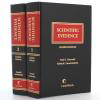![file000320598119[1]](https://ramseylawlibrary.org/wp-content/uploads/2013/04/file00032059811911-300x224.jpg)
Recently the United States Supreme Court startled the criminal law sphere with its decision in Missouri v. McNeely, wherein it ruled that collecting blood samples may require a search warrant depending on the circumstances. On the heels of this decision, The Court thus vacated DWI convictions in three cases (Brooks v. Minnesota), one of which was based on blood testing and the other two based on urine testing. Apparently, the fate of the convictions in the decision wasn’t due simply to their testing’s body-invasion factor, but something more.
As reported in the April 29, 2013 edition of Minnesota Lawyer, Brook’s attorney Jeffrey Sheridan asserts that the cases are about the role of the 4th Amendment in DWI investigations, not about expediting the investigations themselves. As a result, doubt has been cast on the role and validity of statutes like Minn. Stat. 169A.20 subd. 2, which makes it a crime to refuse blood, breath, or urine testing for in DWI investigations. Attorneys cited in the article forecast litigation storm activity on the horizon, particularly in the form of motions to suppress such test results. In contrast, prosecuting attorneys believe that the applicability of McNeely is narrow, indeed limited to scenarios involving nonconsensual testing. (Yet the Law Librarian is currently asking herself, how often would a person’s consent be based on knowing or supposing of the existence of a statute like 169A.20?) In light of this cloud of doubt, Minnesota Lawyer posts a couple of post-McNeely practice tips for both prosecutors and defense attorneys.
![file0001027529042[2]](https://ramseylawlibrary.org/wp-content/uploads/2013/04/file000102752904224-200x300.jpg)
![file000205605496[1]](https://ramseylawlibrary.org/wp-content/uploads/2013/04/file00020560549613-300x199.jpg)
![file0001568639492[1]](https://ramseylawlibrary.org/wp-content/uploads/2013/03/file00015686394921-300x225.jpg)
![9781595588692_p0_v2_s260x420[1]](https://ramseylawlibrary.org/wp-content/uploads/2013/03/9781595588692_p0_v2_s260x4201-202x300.jpg)

![file5721298196911[1]](https://ramseylawlibrary.org/wp-content/uploads/2013/03/file572129819691111-300x200.jpg)

![file000473758103[1]](https://ramseylawlibrary.org/wp-content/uploads/2013/02/file0004737581031-150x150.jpg)

